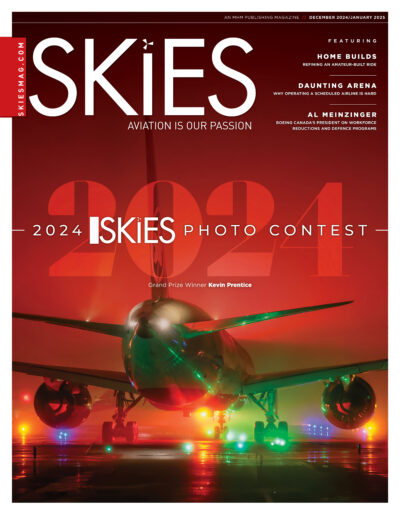A diverse panel of Canadian general aviation (GA) association leaders made the case for greater government financial and regulatory support on Wednesday at AirVenture Oshkosh 2024, but also encouraged their audience in the Canadian Pavilion to do more — both individually and as a community — to promote GA.
Raquel Lincoln, chair of the EAA’s Canadian Council, said soaring costs were deterring more Canadians away from personal aviation, particularly insurance rates and training. On a public policy front, she encouraged GA stakeholders to drive home the importance of general aviation to Canadian policymakers on a continuous basis as opposed to reacting issue by issue, such as with the luxury tax. She noted that GA was often the pilot pipeline for essential aviation services such as air ambulance and cargo, particularly in remote locations.
“Aviation is the lifeline in those communities. The operators that serve them are often the operators that will hire 200- and 300-hour commercial pilots. We have to educate our politicians about the [necessary] first steps.”
That includes public support for young pilot training through the Air Cadet program. Lincoln said the number of seats in the program had recently been halved.
“We [GA] train the pilots. We train the mechanics. Every airport in Canada started out as a small GA airport,” said Mark van Berkel, Canadian Owners and Pilots Association (COPA) president and CEO. “All of us in general aviation in Canada need to make sure that our voices are heard. All of us have the responsibility. We are stewards of the aviation industry.”
Chris Horsten, director of the Canadian Light Sport Aircraft Association, noted that regulatory agency inertia also creates headwinds, and while Transport Canada (TC) employees are typically helpful, he noted in recent years that the agency has had to do more with less due to fiscal pressures.
Horsten also noted that access to policymakers was occasionally difficult. That creates problems when seeking rules clarification, noted Kathy Lubitz, president of the Ultralight Pilots Association of Canada (UPAC), who cited ambiguity over the applicability of mogas STCs for use in Rotax engines as an example.
Van Berkel said the “man-made barriers that are keeping people from getting into aviation is where our focus needs to be.” He advocated for “simplification” of GA policies and procedures as the gateway for greater participation, including flight training and medical certification. He also called on the audience to leverage aviation opportunities unique to Canada to create some of the “same energy” that is on display this week at AirVenture.
Horsten said one way to do that would be to bring more light aircraft manufacturing back to Canada, noting that most light aircraft currently flying in country have been imported.

